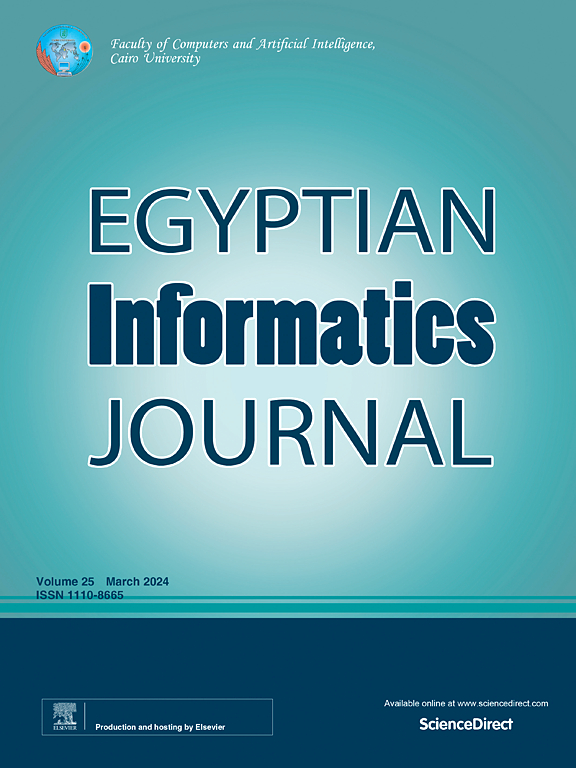Innovative quantum techniques for improving system performance in cloud computing
IF 4.3
3区 计算机科学
Q1 COMPUTER SCIENCE, ARTIFICIAL INTELLIGENCE
引用次数: 0
Abstract
Effective task scheduling is pivotal for optimizing the performance of cloud computing services, particularly to minimize execution time and enhance resource utilization. Traditional approaches often focus on single-objective metrics, such as task completion time, or fail to address the intricate interdependencies between multiple objectives. To overcome these limitations, we introduce QISPF, a novel multi-objective task scheduling algorithm that combines genetic algorithms with innovative quantum techniques. QISPF is designed to achieve an optimal task distribution by addressing key performance metrics makespan, scheduling length, throughput, resource utilization, energy consumption, and load balancing, through a unified measure known as system performance. QISPF leverages quantum techniques to enhance the traditional genetic algorithm framework by incorporating principles from quantum mechanics, such as probabilistic quantum encoding and superposition. The simulations were conducted for two cases. The first had 100 tasks and anything from 10 to 50 virtual machines. Furthermore, in the second case, there were a certain number of virtual machines (VMs), with the number of tasks ranging from 500 to 1000. The simulation results demonstrated the scheduling efficiency of QISPF compared to the G-MOTSA, ETVMC, TSACS, and ACO algorithms. QISPF offers a more powerful approach to exploring and exploiting the solution space. This novel method allows for a richer representation of potential solutions and improves the algorithm’s ability to find high-quality solutions in complex problem landscapes.
改进云计算系统性能的创新量子技术
有效的任务调度对于优化云计算服务的性能至关重要,特别是对于最小化执行时间和提高资源利用率而言。传统方法通常关注单目标度量,例如任务完成时间,或者无法处理多个目标之间复杂的相互依赖关系。为了克服这些限制,我们引入了一种新的多目标任务调度算法QISPF,它结合了遗传算法和创新的量子技术。QISPF的设计目的是通过一种称为系统性能的统一度量来处理关键性能指标——最大时间跨度、调度长度、吞吐量、资源利用率、能耗和负载平衡,从而实现最佳任务分配。QISPF利用量子技术,结合量子力学的原理,如概率量子编码和叠加,来增强传统的遗传算法框架。对两种情况进行了模拟。第一个有100个任务和10到50个虚拟机。此外,在第二种情况下,有一定数量的虚拟机(vm),任务数量从500到1000不等。仿真结果表明,与G-MOTSA、ETVMC、TSACS和ACO算法相比,QISPF算法的调度效率更高。QISPF提供了一种更强大的方法来探索和利用解决方案空间。这种新颖的方法允许更丰富的潜在解决方案的表示,并提高了算法在复杂问题环境中找到高质量解决方案的能力。
本文章由计算机程序翻译,如有差异,请以英文原文为准。
求助全文
约1分钟内获得全文
求助全文
来源期刊

Egyptian Informatics Journal
Decision Sciences-Management Science and Operations Research
CiteScore
11.10
自引率
1.90%
发文量
59
审稿时长
110 days
期刊介绍:
The Egyptian Informatics Journal is published by the Faculty of Computers and Artificial Intelligence, Cairo University. This Journal provides a forum for the state-of-the-art research and development in the fields of computing, including computer sciences, information technologies, information systems, operations research and decision support. Innovative and not-previously-published work in subjects covered by the Journal is encouraged to be submitted, whether from academic, research or commercial sources.
 求助内容:
求助内容: 应助结果提醒方式:
应助结果提醒方式:


